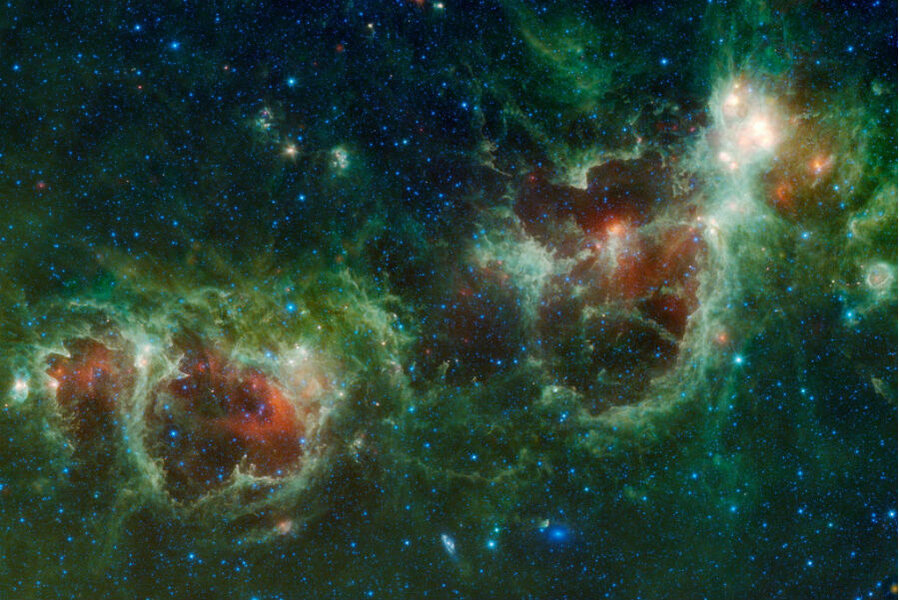Did your zodiac sign change? Don't worry, NASA says astrology is still fake
Loading...
All over the world, people check their horoscopes to see what's in store for them for the day.
For most, it is an entertaining, meaningless diversion, but a few genuinely believe in the predictions based on their astrological sign.
But NASA made waves in the astrological community with its recent post explaining that the astrological signs – constellations that the sun appears to move through during the year – have changed as the Earth's axis has shifted over the 30 centuries since the ancient Babylonians invented astrology.
The uproar was such that NASA's tumblr felt compelled to release a follow-up explanation, emphasizing that astrology is a pseudoscience.
The root of the uproar was apparently an article in Cosmopolitan magazine that claimed that NASA had shaken up the zodiac calendar, and that 86 percent of the star signs people think that they were born under were now incorrect. NASA's "correction" of the zodiac calendar also included a 13th constellation, Ophiuchus, adding further fuel to the viral wildfire that quickly spread across the internet.
According to the NASA post (meant for children) that began the hubbub, the Earth's axis has shifted in the 3,000 years since the signs of the zodiac were first defined. As a result, the constellations over which the sun appears to move have also shifted. The post also pointed out that the sun moves over a 13th constellation, which the Babylonians deigned not to include in the zodiac in order to preserve their 12-month calendar.
None of this is new information, points out Phil Plait of Slate Magazine. He notes that astrologers have been ignoring the 13th constellation for thousands of years, and that sun actually passes through up to 21 constellations, by some counts.
The origins of the zodiac come from a time when astronomers believed that the universe was geocentric, that is, that the heavens revolve around the Earth. Early civilizations examined the stars in a search for patterns that could explain how everything worked. Many people ascribed meaning to patterns of stars in the sky, giving rise to the idea of constellations of stars that represented various aspects of their respective mythologies. As time went on, humans would chart the movements of these constellations and realize that there were predictable patterns in the night sky. These predictions would form the backbone of both astronomy and astrology.
The Ancient Babylonians divided the ancient sky into 12 pieces, each 30 degrees apart, which followed the sun as it supposedly traveled around the Earth over the course of a year. Each piece was represented by a constellation within that 30-degree arc of sky. The segments of the zodiac were an important early celestial coordinate system that provided early astronomers and astrologers with a more sophisticated understanding of the night sky. But as the heliocentric model took hold in Europe in the 17th century, astronomers abandoned the system. Astrologers stuck with the zodiac, holding on to the mystic notion that the movement of the stars could predict the future.
In 1930, the first modern newspaper horoscope, "What the Stars Foretell," was created by Richard Harold (R.H.) Naylor, who was tasked with predicting the future of Princess Margaret in England for the Sunday Express newspaper, according to Linda Rodriguez in an article for the Smithsonian. He continued to publish various astrological predictions about the royal family until he began to branch out into predictive advice for common folk whose birthday fell within the week of his column's publishing. Soon, "What the Stars Foretell" developed into the generalization-laden "star sign" predictions that remain popular to this day.
While most people tend to not take their astrological sign seriously, it is ubiquitous enough in popular culture. Birthstones and zodiac tattoos, for instance, are a perennially popular methods of body decoration that could be threatened by a shift in the constellations they evoke.
NASA reassured its followers on Tumblr that while the zodiac signs are technically off because of Earth's shifting planetary axis, there's nothing "wrong" about their original signs, since astrology has no special predictive power anyway.
"So, we didn't change any zodiac signs," said NASA's tumblr post. "We just did the math."








